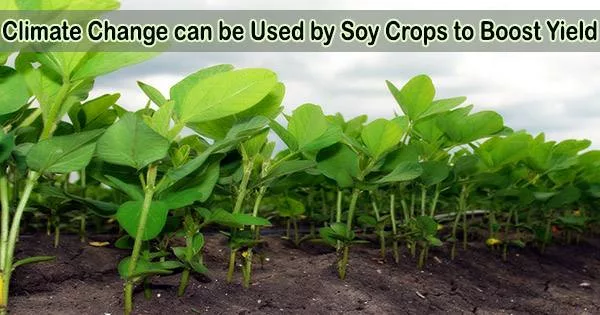A key concern for crop farmers worldwide is atmospheric drying, or the decline in the quantity of water that the air can contain due to global warming. Crop productivity reductions are often linked to atmospheric drying.
But according to recent study from the University of Minnesota, as long as the crops are adequately irrigated, legumes, such as soybeans, can actually be more productive in atmospheric drying conditions.
According to recent research in the journal New Phytologist, the biological nitrogen fixation process, which transfers nitrogen from the air into the plant through its roots, would actually benefit from an increase in the vapor pressure deficit, which is what causes atmospheric death. For plants to be healthy and productive, this procedure is necessary.
The research team includes Walid Sadok, an associate professor in the Department of Agronomy and Plant Genetics; Daniel Monnens, a graduate student in the Department of Agronomy and Plant Genetics; and R. Ford Denison, an adjunct professor in the College of Biological Sciences.
We know that legumes are particularly important for agricultural sustainability because they perform this amazing trick of using atmospheric nitrogen instead of needing to rely on synthetic fertilizers. Such next-generation varieties could not only increase productivity but maybe even reduce the need for using nitrogen fertilizers.
Daniel Monnens
The researchers found:
- Under well-watered conditions, nitrogen fixation increased as atmospheric drying increased.
- This resulted from increased plant transpiration rate brought on by air dryness, which causes water circulating inside the plants to be evacuated more forcefully from the roots.
- This is thought to result in the transportation of substances that prevent nitrogen fixation away from the root nodules, which is where it takes place.
- Due to the possibility that increased transpiration rates could either induce or exacerbate already present soil moisture shortages, this process alone could result in decreased output. If the plant is kept well-watered, increased transpiration rates in soybean crops appear to lessen the inhibition of nitrogen fixation feedback and boost output.
“A result like this indicates that we can potentially breed towards new climate-smart soybean varieties that actually take advantage of this atmospheric drying phenomenon to boost their nitrogen fixation ability and increase yields or their resilience,” said Sadok.
“We know that legumes are particularly important for agricultural sustainability because they perform this amazing trick of using atmospheric nitrogen instead of needing to rely on synthetic fertilizers. Such next-generation varieties could not only increase productivity but maybe even reduce the need for using nitrogen fertilizers,” said Monnens.
















